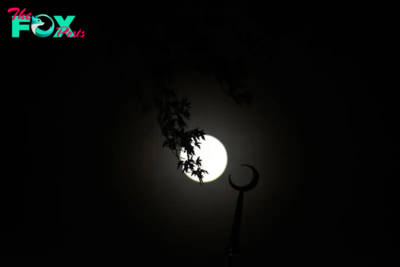Science
Stars, planets and more will be visible during the total solar eclipse on April 8. Here's what to look for, and where.
An observer in or near the path of totality for the April 8 solar eclipse may be witness to many unusual phenomena, including the appearance of the moon's shadow projected on the Earth's atmosphere, and darkness during the daytime.
For the upcoming eclipse, a few minutes before the start of totality, a conspicuous shadow should appear, mimicking an approaching storm, moving from the west-southwest sky and toward the observer. Darkness will follow, and with it the chance to see stars, planets and possibly other bright objects in the daytime sky.
Here's what to look for during totality, and where in the sky to look.
Related: April 8 solar eclipse: What time does totality start in every state?
Exotic colors and lighting
I've often been asked, why bother traveling to an eclipse? My answer is always the same: "You must see one for yourself, and then you will understand." Astronomy writer Guy Ottewell planned to create a painting of the 1983 eclipse visible from Borobudur in Java. He later wrote in his book, "The Under-Standing of Eclipses:
"During the minutes of totality, I was conscious of being in a different visual world; of trying to memorize colors for which I had no names, which would be as hard to recall or describe as a taste."

For those witnessing the total phase, the moon's shadow overhead appears a dusky blue (if there are no clouds), and the light from outside its edge forms a bright border around the horizon. The saffron tint of air outside an eclipse shadow may be especially impressive. Since air scatters long wavelengths of light less than short, the light from outside the shadow is yellowed or reddened, the exact color depending on the distance from the shadow edge to the observer.
-

 Science2h ago
Science2h agoHow to See the ‘Beaver’ Supermoon—the last of 2024
-

 Science5d ago
Science5d agoInside Capitol Hill’s Latest UFO Hearings
-

 Science5d ago
Science5d agoYou Won’t Want to Miss the Leonid Meteor Shower. Here’s How and When You Can See It
-

 Science5d ago
Science5d agoHere’s What Trump’s Win Means for NASA
-

 Science1w ago
Science1w agoWhy Risky Wildfire Zones Have Been Increasing Around the World
-

 Science1w ago
Science1w agoIt’s Time to Redefine What a Megafire Is in the Climate Change Era
-

 Science1w ago
Science1w ago4 Astronauts Return to Earth After Being Delayed by Boeing’s Capsule Trouble and Hurricane Milton
-

 Science1w ago
Science1w agoThe Elegance and Awkwardness of NASA’s New Moon Suit, Designed by Axiom and Prada



























